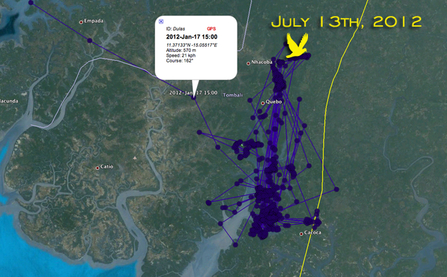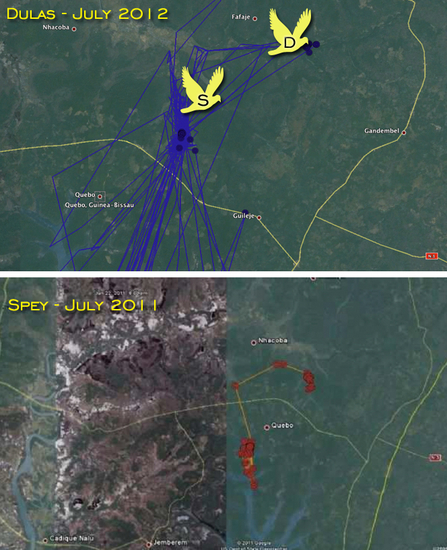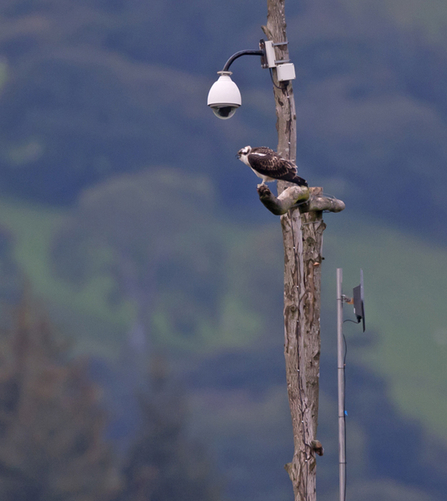This is the blog I hoped I would not have to write, not for many more years anyway. We have lost contact with Dulas.
The last blog, written on June 6th, was a celebration of his first year and all the trials and tribulations he had been through in just twelve months. Six weeks later, on July 13th, we received the last transmissions from his tracker. At this time of year he's on a three day cycle, so we should have received more data on the 16th, 19th, 22nd and so on; we haven't.
Looking closely at his last set of data, everything looks normal up to the the last few hours. On July 13th, the activity reading doesn't move from 09:55 until his last data point at 15:33, meaning the tracker didn't move during this time. We have had no transmissions since then.
The yellow bird denotes Dulas' last position at 15:33 on July 13th, 2012



